Ta Prohm Temple, built from around 1186 by King Jayavarman VII to dedicate to his mother. Rajavihara (Royal temple), was one of the first temples founded as part of a massive construction and public works program after the King’s ascension to the throne. The temple’s main image, representing Prajnaparamita, the personification of wisdom, was modeled on the king’s mother. The northern and southern satellite temples in the third enclosure were dedicated to the king’s guru and his elder brother, respectively. As such, Ta Prohm formed a complementary pair with the temple monastery of Preah Khan, dedicated in 1191 A.D., the main image of which represented Avalokitesvara, the Bodhisattva of compassion, and was modeled on the king’s father.
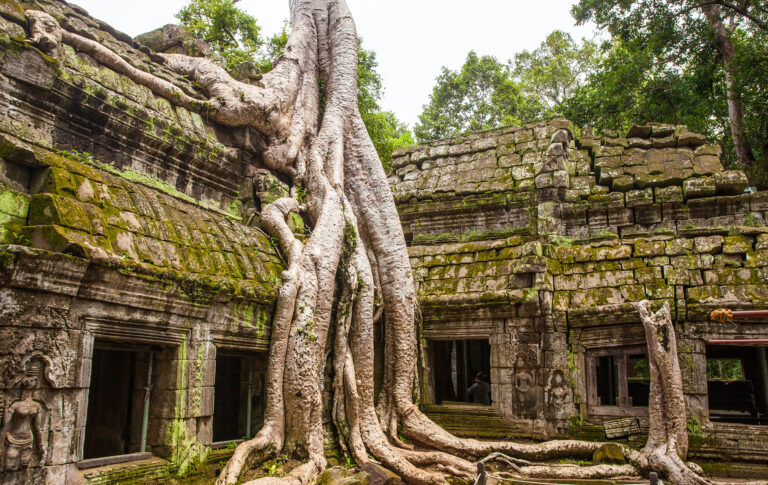
It is one of the rare temples in the Angkor region where an inscription provides information about the temple’s dependents and inhabitants. During the most glorious period of Angkor, it is said that to maintain and attend the temple, nearly 80,000 people were involved, including over 2,700 officials and 615 dancers.
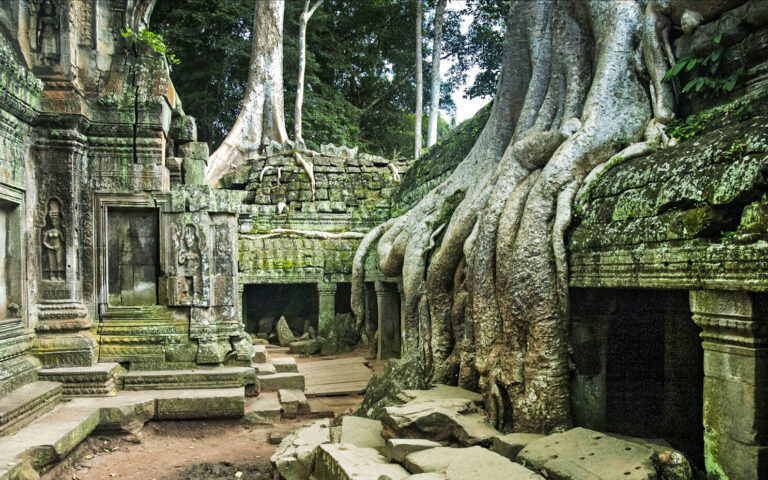
Ta Prohm, famously known as the Tomb Raider Temple after being featured in the iconic Tomb Raider movie, has also earned the moniker "Angelina Jolie Temple" due to her association with the film.
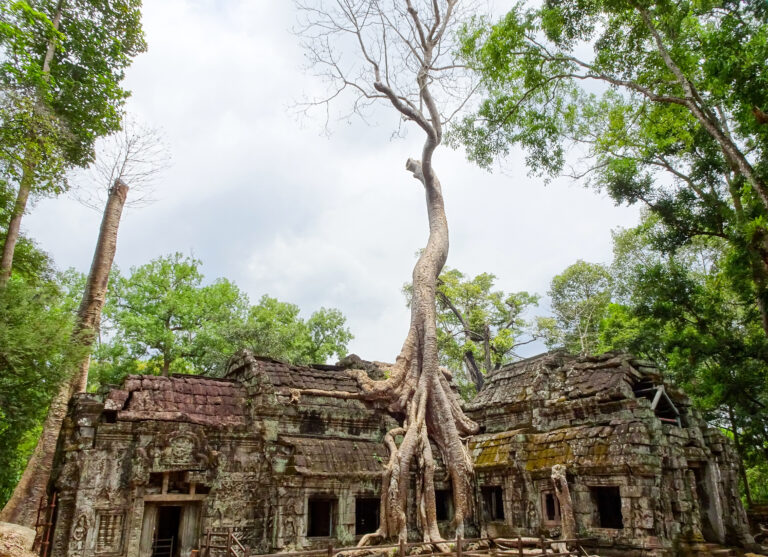
However, this extraordinary temple distinguishes itself from the ordinary. Enveloped in dappled shadows, its towers crumble, and walls embrace the slow, muscular grip of sprawling root systems. Ta Prohm boasts towers, closed courtyards, and narrow corridors. Many passageways are obstructed by jumbled piles of intricately carved blocks displaced by the roots of long-decayed trees. Bas-reliefs on protruding walls are adorned with lichen, moss, and creeping plants, while shrubs emerge from the roots of grand porches. Towering overhead are trees, centuries-old, their leaves filtering sunlight and casting a greenish hue over the entire scene.
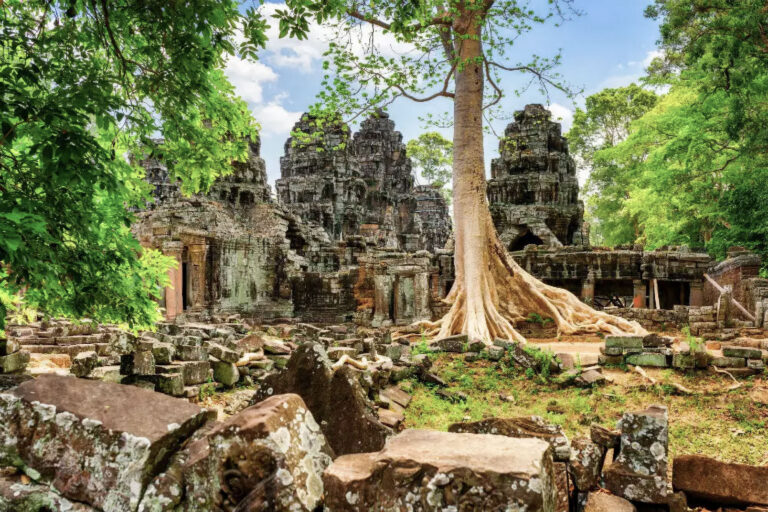
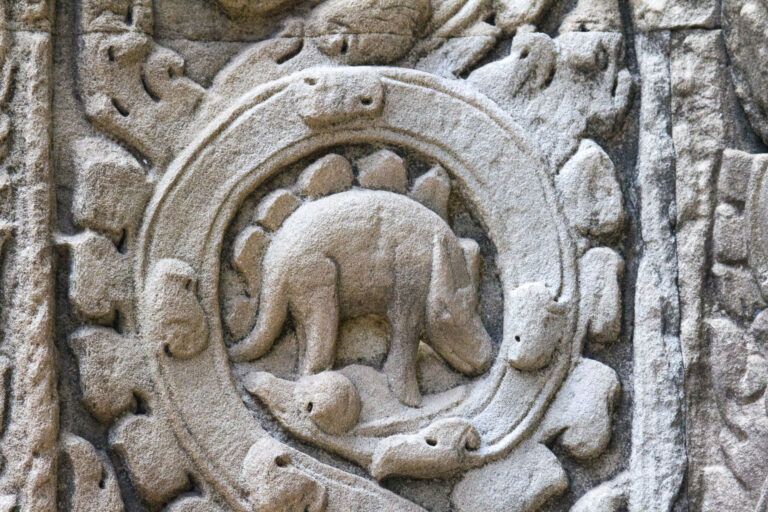
At Ta Prohm, the temple's engulfment by nature is not the only intriguing feature. An enigmatic carving resembling an ancient dinosaur, specifically a Stegosaurus, has captured attention. This peculiar carving has sparked debates and speculations in recent years. Some propose it as evidence that dinosaurs coexisted with humans. However, considering Ta Prohm's construction in the 12th century, the people of that era lacked the technology to accurately depict a Stegosaurus, even if they had discovered dinosaur bones.
